Maitake means “dancing mushroom” in Japanese. Stories say this name arose when people would find this mushroom in the wild, and become so happy they’d start to dance!
What are maitake mushrooms (hen of the woods?) Maitake are a polypore bracket fungus that grows at the base of oak trees and other hardwoods in temperate forests from August to November. They are highly valued for both their medicinal effects and their culinary uses.
In this article, I’ll explain what maitake mushrooms are, how to identify them, and how to forage for them or try to grow them yourself. As well as how to consume them and what their many purported health benefits are.
What Are Maitake Mushrooms?
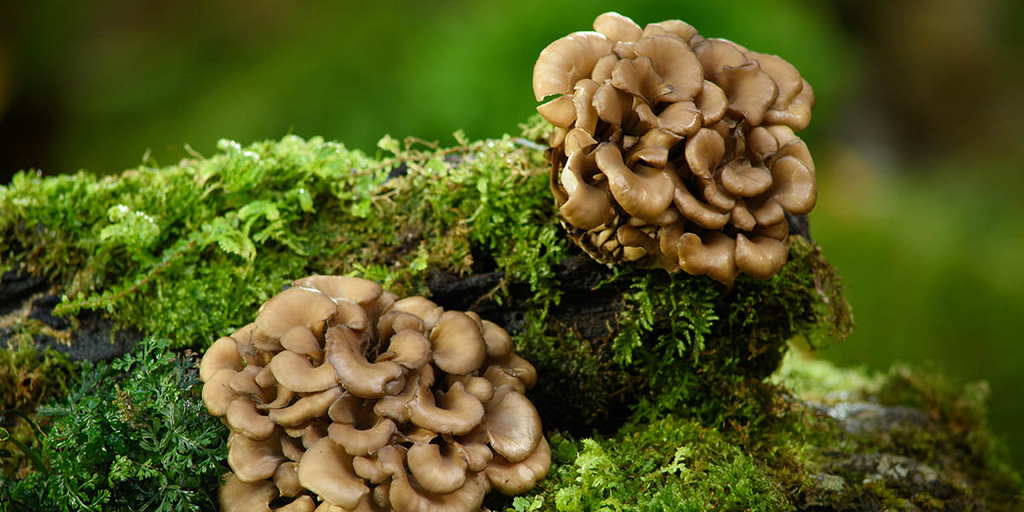
The Latin name for maitake mushrooms is Grifola frondosa. You might also hear them go by several other names including hen of the woods, sheep’s head, ram’s head, the signorina mushroom, dancing mushroom, king of the mushrooms, kumotake (cloud mushroom,) and more.
They’re one of the most popular mushrooms in Japan and China for both their delicious taste and reported medicinal qualities. Scientists are still researching the possible health benefits of this mushroom.
The potential for it to inhibit the growth of some types of cancers looks promising, but not yet thoroughly tested. In Chinese medicine, they’re also used to treat diabetes and hypertension.
Maitake is a polypore fungus. That means it doesn’t have gills like many other types of mushrooms. Instead, it has small pores that it uses to release its spores.
They are a bracket fungus that tends to grow on and around wood, especially oak trees. But they also like to grow near maple and elm trees as well.
Maitake mushrooms grow large and can commonly weigh 20 pounds (9 kilograms.) Although they get as big as 50 pounds (23 kilograms.)
Because of their dull brownish color, they can be hard to see, especially in the fall when the ground is covered with leaves.
Maitake mushrooms have been popular in Asia for thousands of years. But it’s only really been for the past couple of decades that they’ve started to really grow in popularity in North America and Europe.
But now that people around the world are learning about their delicious taste and health benefits, they aren’t likely to be forgotten about any time soon!
How To Identify Maitake Mushrooms
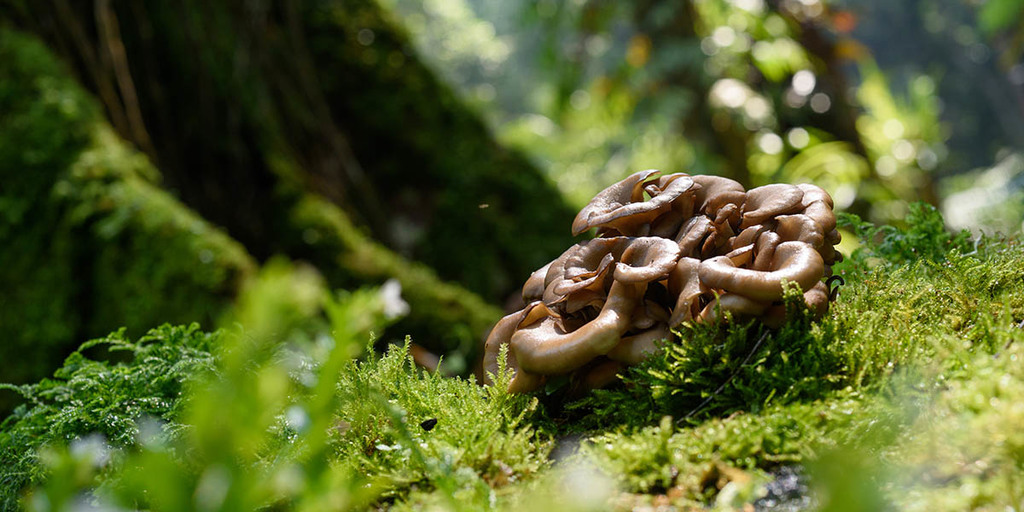
These bracket fungi are relatively short-lived. They have a pleasant aroma at first, but develop a terrible smell once they’re fully mature.
Maitake mushrooms grow in clusters of flattened brown caps with white edges. The name “hen of the woods” comes from the fact that the cluster of mushrooms somewhat resembles the ruffled feathers of a sitting hen.
Larger maitake mushrooms turn a lighter tan brown or grey color as they mature.
From underneath, maitake mushrooms have stems that branch out and resemble the structure of a piece of broccoli or cauliflower. Especially if you cut them into a cross-section.
Maitake clusters can be as small as 4 inches (10 cm) across, or as large as 36 inches (100 cm) or more. Each cap can be between 3/4s of an inch (2 cm) and 3 inches (8 cm) across, and about a quarter-inch in thickness.
Maitake are most commonly found around the base of oak tree stumps, or at the base of dead or dying trees. They are most commonly found in Japan, China, and the northeastern United States and Canada.
But they also grow in parts of Europe where the climate is right, as well as occasionally in the southeastern and northwestern parts of the United States.
Depending on weather conditions, maitake can grow from early autumn all the way into late November.
Maitake mushrooms have no gills, but leave a white spore print.
They are best picked young while they are tender, as they can get woody and bitter when they’re more mature. The flesh inside should be white and firm. They have an earthy and spicy flavor and a woodsy scent.
There aren’t many lookalike mushrooms that you could confuse with maitake. Most that you may confuse them with are also edible as well, so it’s not as big of a concern compared to some other species.
Some similar mushrooms include chicken of the woods (laetiporus sulphureus) which has a more yellowy orange color. Or meripilus giganteus which will stain black when bruised, but is also edible.
- You can learn more of how to identify edible mushrooms from toadstools in my Toadstools vs. Mushroom guide.
Can You Forage For Maitake Mushrooms?
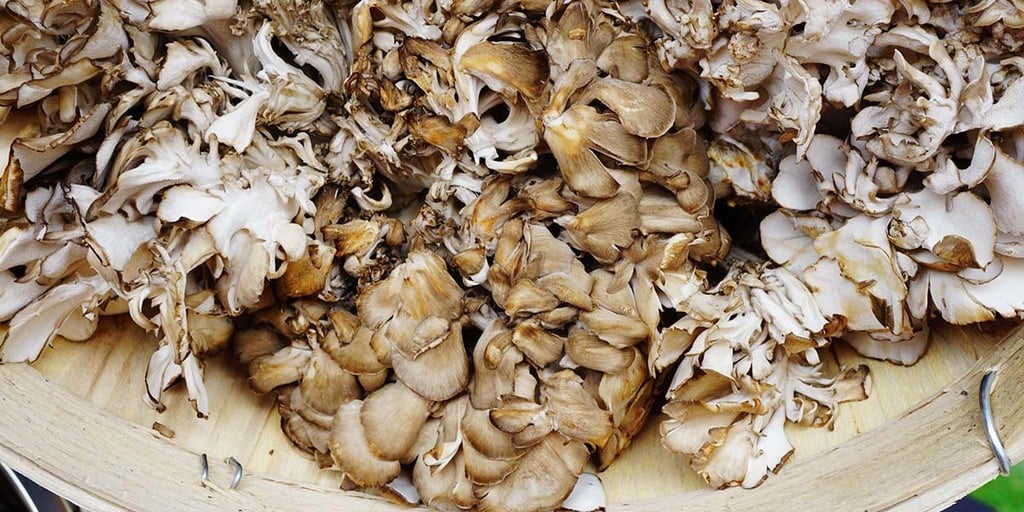
You can start foraging for maitake mushrooms in mid to late August, all the way into November.
Bring a small knife with you to easily cut and harvest maitake mushrooms. Their stems grow thick, so it’s easier to cut than try to pull off the tree.
Otherwise, you risk damaging them. Usually, the thickest part of the stem is too old and tough to eat, so you may only want to harvest and keep the upper fronds.
Outside of China or Japan, you’ll have the best luck finding maitake mushrooms in the northeastern United States.
But they can pop up almost anywhere with a temperate forest climate. So keep an eye out the next time that you go for a hike in the fall.
Maitake mushrooms don’t tend to grow on open ground. They tend to be found at the base of trees where there’s lots of dead leaves and other organic matter to help shade them from sunlight.
So they can be a bit tricky to find, especially since their brownish color will really cause them to blend in. Luckily their large size and the wavy pattern will give you something distinct to look for.
Maitake grows best in damp conditions, so go out looking for them a couple of days after heavy rain.
Oak savannahs are an ideal location for maitake mushrooms to grow, so try to find a forest in your area with lots of oak trees to maximize your chances.
Hen of the woods will grow back in the same spot every year. So you might want to note the location of any mushrooms that you harvest, so you can return again next autumn.
How To Grow Maitake Mushrooms

If you really enjoy maitake mushrooms, you can try to cultivate them at home. But usually, they won’t grow as well at home compared to in the wild.
You should also expect to wait a while for the mycelium to mature before you will get a good yield.
You can maximize your chances of success by trying to recreate the natural growing conditions of maitake mushrooms as best you can.
You don’t necessarily need to have a full-grown oak tree in your yard to make it work, but try your best to emulate how they’d normally grow.
If you’ve ever grown shiitake mushrooms before, then the process should seem quite familiar to you.
Start off by getting an oak log that’s at least 3 feet long and 6 inches wide. Soak it in cold water for at least six hours.
Then use a 5/16ths drill bit to drill holes all along the log, drilling about 1.5 inches deep. Try to space them so that you can get about 30 holes on the log.
Using dowels to inoculate your log is best. You can try growing your own starter spawn from wild maitake and creating your own dowels.
Use 1-inch long oak dowels if you do. But usually, it’s easier to just buy pre-inoculated maitake dowels online.
Once you’ve hammered your dowels into your log, you’ll want to use cheese wax to seal it shut. About 100 grams or a quarter pound of wax should be enough to seal your whole log.
Paint the melted wax over the dowel holes using a pastry brush, making sure to completely seal it. The wax will help keep competing fungi and bacteria out of your log, as well as insects.
Now your log just needs to sit outdoors in a damp area for six months or more. Keep your log elevated off the ground to help reduce the risk of mold and other fungi from colonizing the log.
Even placing it up on a couple of bricks will help. You will need to water your log to keep it moist at all times. Usually watering every two weeks is enough, but you can do more if you notice your log getting dry.
After six months, you’ll start to notice mushroom pins beginning to grow around where you placed the dowel. That’s your sign that your log is ready to be shocked into starting to grow.
Soak your log in ice water for a full 24 hours to help really kickstart the growing process. This will trick your mushrooms into thinking it’s spring when you remove them from the ice water.
Then prop your log up somewhere shady and let the maitake grow.
Maitake grows slower than many other types of mushrooms. After your first harvest, you might need to wait for 6 weeks or more for the mushroom clusters to regrow.
It can take a couple of years for the log to fully mature and start giving a good crop.
- Read my Ultimate guide of How to grow mushrooms before you start.
Can You Eat Maitake Mushrooms? What Do They Taste Like?
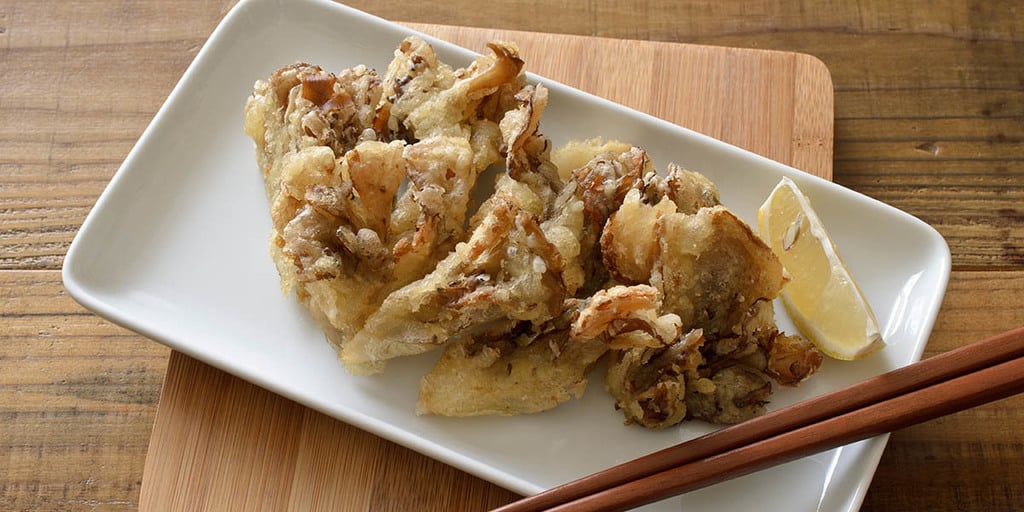
Maitake mushrooms are sought-after by chefs because of their earthy aroma and taste, their unique texture, and their sheer versatility.
Most cooks agree that they’re best when sauteed, but there are many ways you can cook them. They can also be roasted, dried, or deep-fried for a more satisfying crunch and chewy texture.
You can even dehydrate slices of maitake and eat them like potato chips. Or crush the dried mushrooms into a powder to add to meals or smoothies purely for their health benefits.
Some people are allergic to maitake, even if they can eat all other types of mushrooms without any problems.
So the first time you eat it, I would recommend trying a small portion and then waiting for an hour or more to see if you have any kind of adverse reaction to them.
Cleaning Maitake Mushrooms
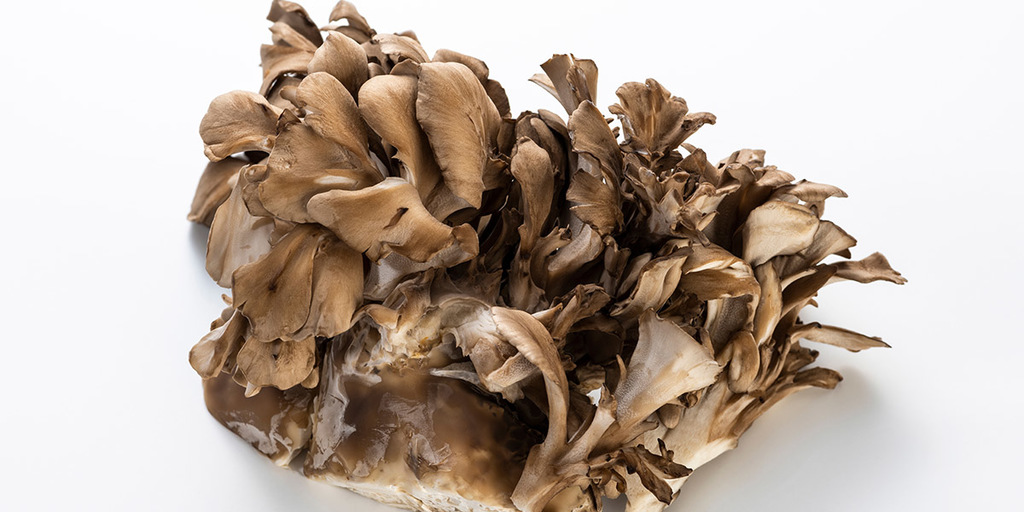
Since maitake grows in clusters among lots of debris, they require more cleaning than most other types of mushrooms. There are lots of crevices where dirt and twigs can become wedged.
Start by picking off any obvious larger pieces of leaves, sticks, or other organic matter that might be on the mushrooms. Then use a soft brush like a toothbrush to wipe away any more stubborn soil from the mushroom.
Most of the older parts of the mushroom near the base will be too tough and woody to eat, so it needs to be cut off with a sharp knife and discarded.
You’ll also want to remove any pieces that look moldy, bruised, or affected by insects and throw them away too.
Like other types of mushrooms, you want to avoid soaking maitake since they’ll get mushy and soggy from absorbing too much water.
Instead, you can use a damp paper towel to wipe each piece of mushroom after you’ve brushed them off. That will help to remove any residual dirt that’s still left behind.
Storing and Preserving Maitake Mushrooms
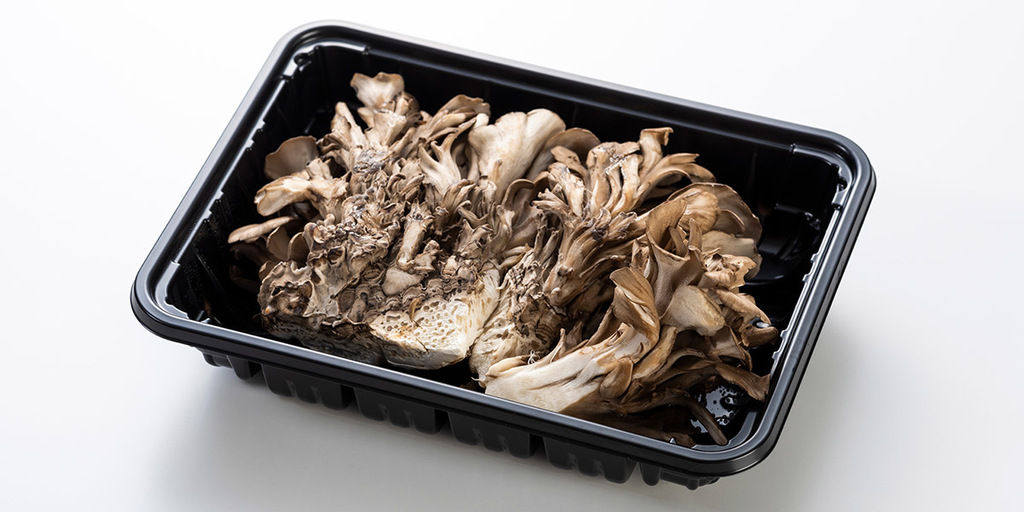
Since maitake mushrooms are only available in the fall, you’ll find large amounts of them only once a year. So you will need a way to preserve any extra mushrooms for the rest of the year.
Maitake don’t have gills like most mushrooms, so they tend to store better and not absorb as much water when stored, which is helpful.
Maitake freezes well either raw, boiled, or sauteed. Cut them into pieces and individually freeze them on a cookie sheet, then put them in an airtight bag. They’ll retain their freshness in the freezer for about 6 months.
You can also dehydrate them by slicing them thinly and placing them in a food dehydrator until they’re brittle and break in half easily. Drying will cost you some of the maitake’s nutrition and flavor, however.
The Health Benefits of Eating Maitake Mushrooms
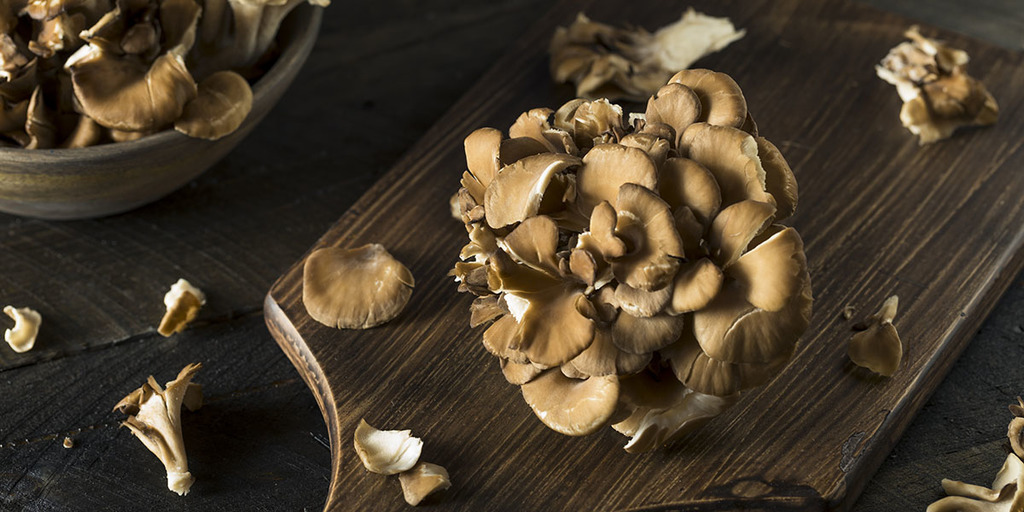
Studies have shown that maitake mushrooms slow down the growth of some types of tumors, particularly breast cancer. They also help to boost the immune system to help the body better fight off bacteria and viruses.
They can also help to control diabetes by reducing blood glucose levels and helping to prevent insulin resistance.
Maitake mushrooms contain a number of beneficial compounds like beta-glucans, potassium, fiber, and amino acids. But in particular, they contain high doses of vitamin D (good for your nervous system and bone development) and antioxidants.
Maitake has a cumulative effect, and they need to be consumed for weeks or months before you can expect to notice a significant improvement.
Eating freshly cooked maitake mushrooms will provide you with the most health benefits. But for people who dislike the taste or texture, it can be taken in its dried form in capsules.
Dosage will depend on what you’re taking it for, so contact your doctor before starting to consume maitake mushrooms as a supplement regularly.
Don’t stop taking any of your current prescription medicine without talking to your doctor first, even if symptoms seem to improve while consuming maitake mushrooms.
Avoid taking maitake mushrooms within two weeks of surgery, if you’re pregnant or breastfeeding, or if you have any bleeding disorders.
If you’re buying maitake supplements, buy from reputable suppliers who grow the mushrooms organically and sell 100% extract with no added fillers.
Pair your maitake supplements with vitamin C to help increase the absorption rate of beneficial compounds found in the mushroom.
There have been some limited studies to suggest that maitake may help with lowering cholesterol and high blood pressure, as well as offset some of the side-effects of chemotherapy, but not enough research has been done to fully back these claims yet.
Why Are Maitake Mushrooms Expensive?
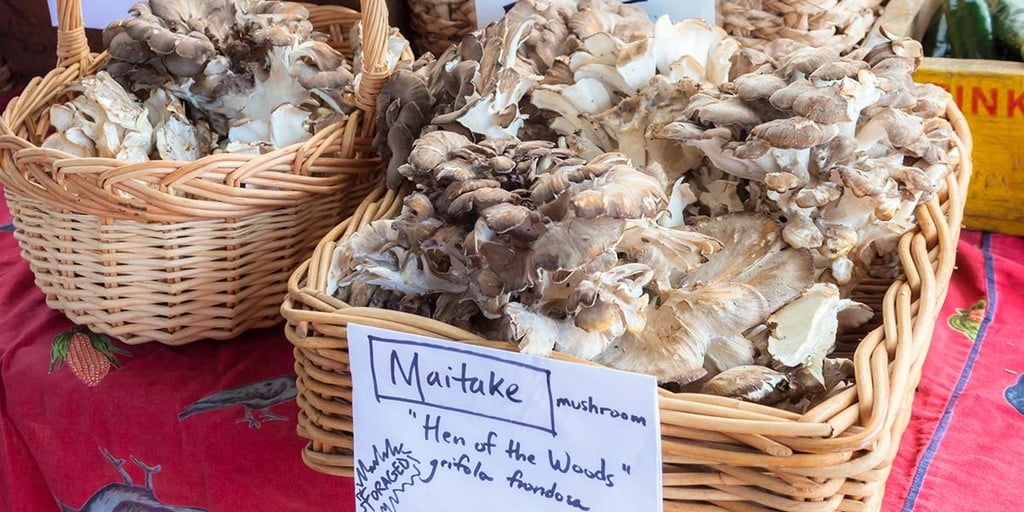
Maitake mushrooms aren’t commonly found in supermarkets, and cost more than more common varieties like button mushrooms, oyster mushrooms, or shiitake.
One pound of dried maitake or a bottle of high-quality maitake extract supplements can cost $60 or more. But why?
There’s a high demand for maitake mushrooms from a variety of different industries, which can drive up the price.
Health supplement companies are very interested in buying them and extracting their polysaccharides, while chefs around the world want to use them in their cuisine.
Some maitake is harvested from the wild, which is more labor-intensive. It’s more difficult to farm than other varieties of mushrooms.
It also takes longer to grow, so even for farmers there’s a longer turnaround time between when a log is inoculated and when they actually have fully mature maitake to harvest.
Conclusion
Maitake are a mushroom that is highly regarded for both its taste and health benefits.
These mushrooms are easy to identify, and most similar lookalike mushrooms are also edible, so foraging for them doesn’t pose a high risk.
There are several excellent mushroom identification apps that may help with identification. But, you should still check with an expert and don’t eat any mushrooms that you can’t 100% positively identify.
Maitake grow wild around the base of oak trees and other hardwoods in the autumn.
They can be found mostly in the northeastern United States, but also show up throughout North America, Europe, and Asia as long as the climate supports them.
You can try growing your own maitake mushrooms at home using an oak log and some inoculated dowels. Although they take more effort and much longer to grow than other varieties like oyster mushrooms.
If you want to learn more about types of mushrooms and how to grow them, read my articles below:
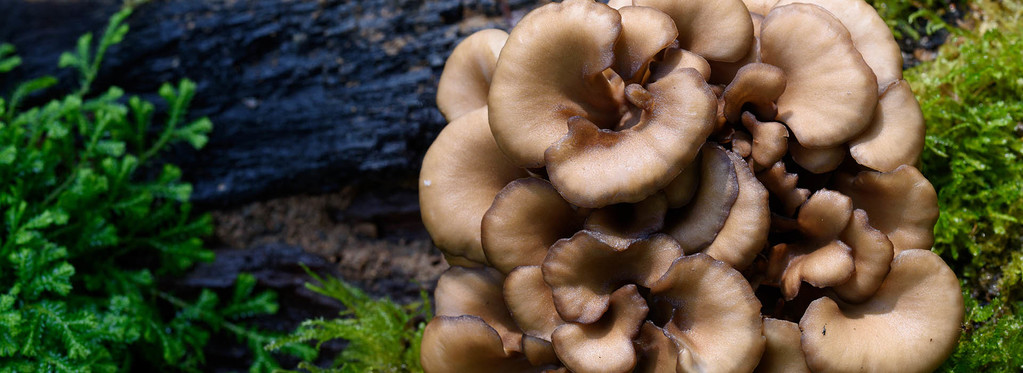
Hi, i foud https://grocycle.com very useful. The Hen of The
Woods (Maitake): The Ultimate Guide page it is well written and
has helped me a lot. I and my friends Louis and MohammadKyl used the best product to
lose weight and to be fit in summer. Now we have forgotten the ugly fat and we are glad
of our weight. Now I feel beautiful and attractive.I am so happy!!!
🙂 If you are interested for yourself, enter: https://s96.me/fit .
Kiss you All!
First off I would like to say excellent blog! I had a quick question that
I’d like to ask if you don’t mind. I was interested to know
how you center yourself and clear your thoughts before writing.
I’ve had trouble clearing my mind in getting my thoughts out.
I truly do take pleasure in writing however it just seems like the first 10
to 15 minutes are usually wasted just trying to figure out how
to begin. Any recommendations or hints? Many thanks!